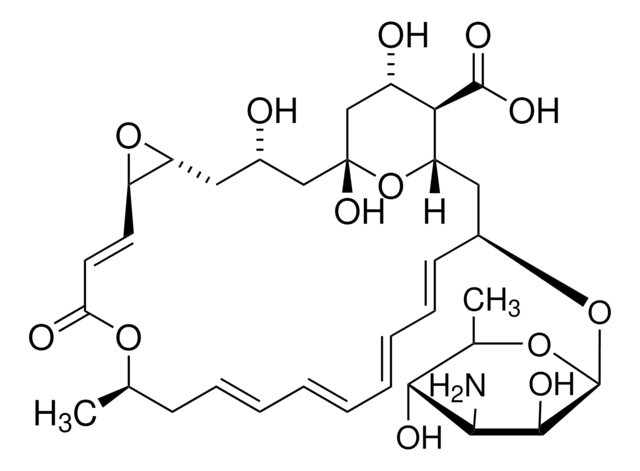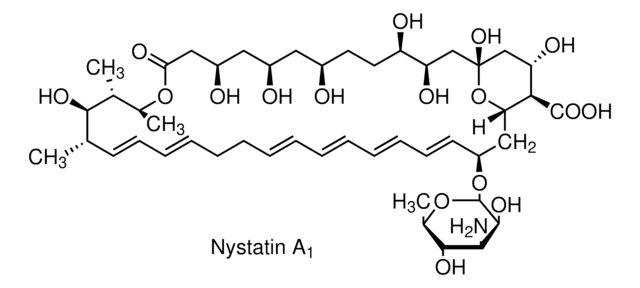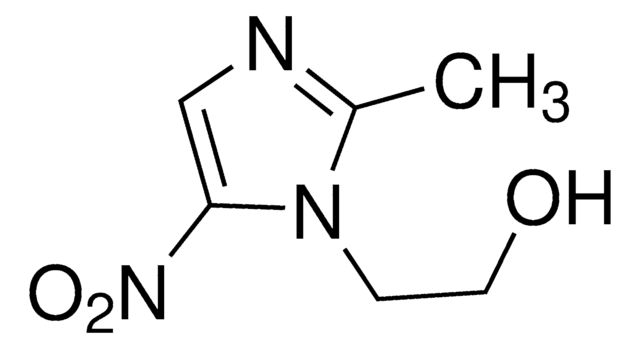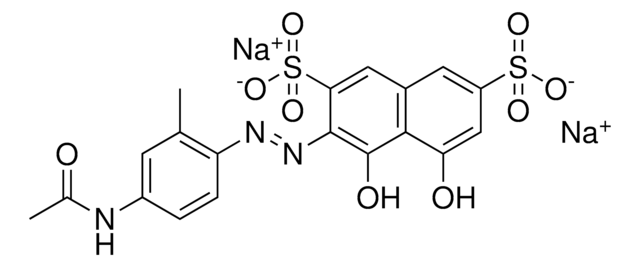Key Documents
P9703
Pimaricin
from Streptomyces chattanoogensis, ≥95% (HPLC)
Synonim(y):
Natamycin
About This Item
Polecane produkty
pochodzenie biologiczne
Streptomyces chattanoogensis
Poziom jakości
Próba
≥95% (HPLC)
Postać
lyophilized powder
powder
rozpuszczalność
0.1% formic acid in methanol: soluble 1 mg/mL
spektrum działania antybiotyku
fungi
Zastosowanie
agriculture
environmental
Tryb działania
cell membrane | interferes
temp. przechowywania
2-8°C
ciąg SMILES
C[C@@H]1C\C=C\C=C\C=C\C=C\[C@@H](C[C@@H]2O[C@](O)(C[C@@H](O)C[C@H]3O[C@@H]3\C=C\C(=O)O1)C[C@H](O)[C@H]2C(O)=O)O[C@@H]4O[C@H](C)[C@@H](O)[C@H](N)[C@@H]4O
InChI
1S/C33H47NO13/c1-18-10-8-6-4-3-5-7-9-11-21(45-32-30(39)28(34)29(38)19(2)44-32)15-25-27(31(40)41)22(36)17-33(42,47-25)16-20(35)14-24-23(46-24)12-13-26(37)43-18/h3-9,11-13,18-25,27-30,32,35-36,38-39,42H,10,14-17,34H2,1-2H3,(H,40,41)/b4-3+,7-5+,8-6+,11-9+,13-12+/t18-,19-,20+,21+,22+,23-,24-,25+,27-,28+,29-,30+,32+,33-/m1/s1
Klucz InChI
NCXMLFZGDNKEPB-FFPOYIOWSA-N
Szukasz podobnych produktów? Odwiedź Przewodnik dotyczący porównywania produktów
Opis ogólny
Zastosowanie
Działania biochem./fizjol.
Inne uwagi
Kod klasy składowania
11 - Combustible Solids
Klasa zagrożenia wodnego (WGK)
WGK 3
Środki ochrony indywidualnej
Eyeshields, Gloves, type N95 (US)
Certyfikaty analizy (CoA)
Poszukaj Certyfikaty analizy (CoA), wpisując numer partii/serii produktów. Numery serii i partii można znaleźć na etykiecie produktu po słowach „seria” lub „partia”.
Masz już ten produkt?
Dokumenty związane z niedawno zakupionymi produktami zostały zamieszczone w Bibliotece dokumentów.
Klienci oglądali również te produkty
Nasz zespół naukowców ma doświadczenie we wszystkich obszarach badań, w tym w naukach przyrodniczych, materiałoznawstwie, syntezie chemicznej, chromatografii, analityce i wielu innych dziedzinach.
Skontaktuj się z zespołem ds. pomocy technicznej







